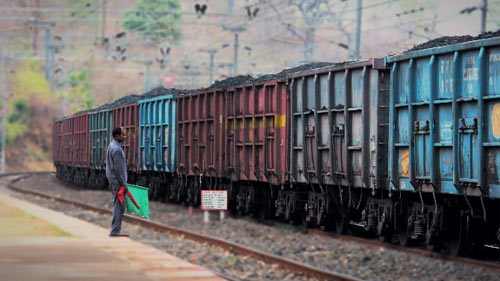
In today’s world, tons of goods are moved from one place to another through trucks, airplanes, semi-trucks, and railways. Each transport system has its own benefits. Some can take away small amounts of goods, and others have a large capacity. The railway system is one of them, which can transport passengers, goods, and industrial materials.
The rail supply chain has become the backbone of global logistics and transportation. Railways have huge networks of rails, trains, and support infrastructure. The logistics or control center manages the rail chain supply and system. A lot of manpower and rail network is involved in transporting goods timely and safely.
The Major Impact of the Rail Supply Chain on Various Industries
The rail supply chain is adopted by almost every big to medium-sized business. They transport tonnes of things from one place to another every day. So the following are the 7 main industries that are taking benefit from the railway supply chain.
1. Agriculture and Food Production
The agriculture industry relies heavily on the rail supply chain to transport bulk commodities such as grains, livestock feed, and fertilizers. Railroads provide an efficient and cost-effective means to move these goods from rural production areas to urban markets and ports for export.
These trains load grain from warehouses and transport it to required places. It also makes farmers work easy. They can sell their crops in different places in the country.
2. Manufacturing and Heavy Industry
For the manufacturing sector, especially in heavy industries such as automotive, steel, coal, and machinery, the rail supply chain is vital for the transport of raw materials and finished goods. Here’s how the railway system supports these industries:
- Raw Material Transport: Heavy industries often rely on rail to transport essential raw materials like coal, iron ore, and steel, which are difficult and expensive to move by road.
- Component Delivery: Manufacturing plants depend on rail to deliver parts and components just in time and safely. Everything reaches the scheduled timing by the rail supply chain.
- Finished Goods Distribution: After production, rail provides a reliable means to distribute finished products to warehouses, retailers, or directly to customers, often over long distances.
3. Energy Sector
The energy sector, such as oil, gas, and renewable energy, depends on the rail supply chain for various critical operations:
- Crude Oil Transport: Railroads transport crude oil from extraction sites to refineries, especially in regions lacking pipeline infrastructure.
- Coal Delivery: Power plants rely on rail to deliver coal, which is capable of delivering coal in large volumes.
- Renewable Energy Components: With the growth of renewable energy, rail is increasingly used to transport bulky components like wind turbine blades, power generators, and solar panels.
4. Retail and Consumer Goods
Retailers and consumer goods companies benefit significantly from the rail supply chain in the following ways:
- Bulk Shipments: Rail can move large volumes of consumer goods efficiently. It supports the supply chains of big-box retailers and e-commerce giants.
- Intermodal Transport: Combining rail with trucking in intermodal transport solutions allows for the flexible and efficient movement of goods. It is a bridge between long-haul rail and final-mile delivery.
- Cost Efficiency: The cost advantage of rail transport is another plus point. Retailers can offer competitive prices and maintain healthy profit margins.
5. Chemical and Pharmaceutical Industries
The chemical and pharmaceutical sectors require safe, reliable, and efficient transportation solutions that rail can provide:
- Hazardous Materials: Railroads are built to handle hazardous materials with specialized safety protocols. It ensures the secure transport of chemicals.
- Bulk Chemicals: Rail is ideal for moving bulk chemicals over long distances.
- Pharmaceutical Distribution: For temperature-sensitive pharmaceuticals, rail provides controlled environments and efficient delivery schedules.
6. Construction and Infrastructure
The construction industry also depends on the rail supply chain for the delivery of materials and machinery essential for building infrastructure:
- Building Materials: Rail transports bulk materials such as cement, steel, and lumber to construction sites.
- Heavy Machinery: The rail network moves heavy construction equipment across regions such as cranes, diggers, and bulldozers.
7. Environmental and Sustainability Impact
Mostly, electric trains are running all over the world. The rail supply chain contributes to sustainability and environmental goals in multiple ways:
- Lower Emissions: Rail transport is more energy-efficient and produces lower greenhouse gas emissions.
- Reduced Congestion: By moving large volumes of freight, rail reduces the number of trucks and traffic congestion on the road. Which saves a lot of fuel.
- Land Use Efficiency: The standard rail track size is 4 feet, 8.5 inches. Rail corridors require less land compared to highways.
Conclusion
The rail supply chain has become an important part of our transport and logistics system. From agriculture to retail, energy to construction energy, rail transport ensures the smooth flow of goods essential to economic growth and societal well-being. It is beneficial for all businesses and corporations.


